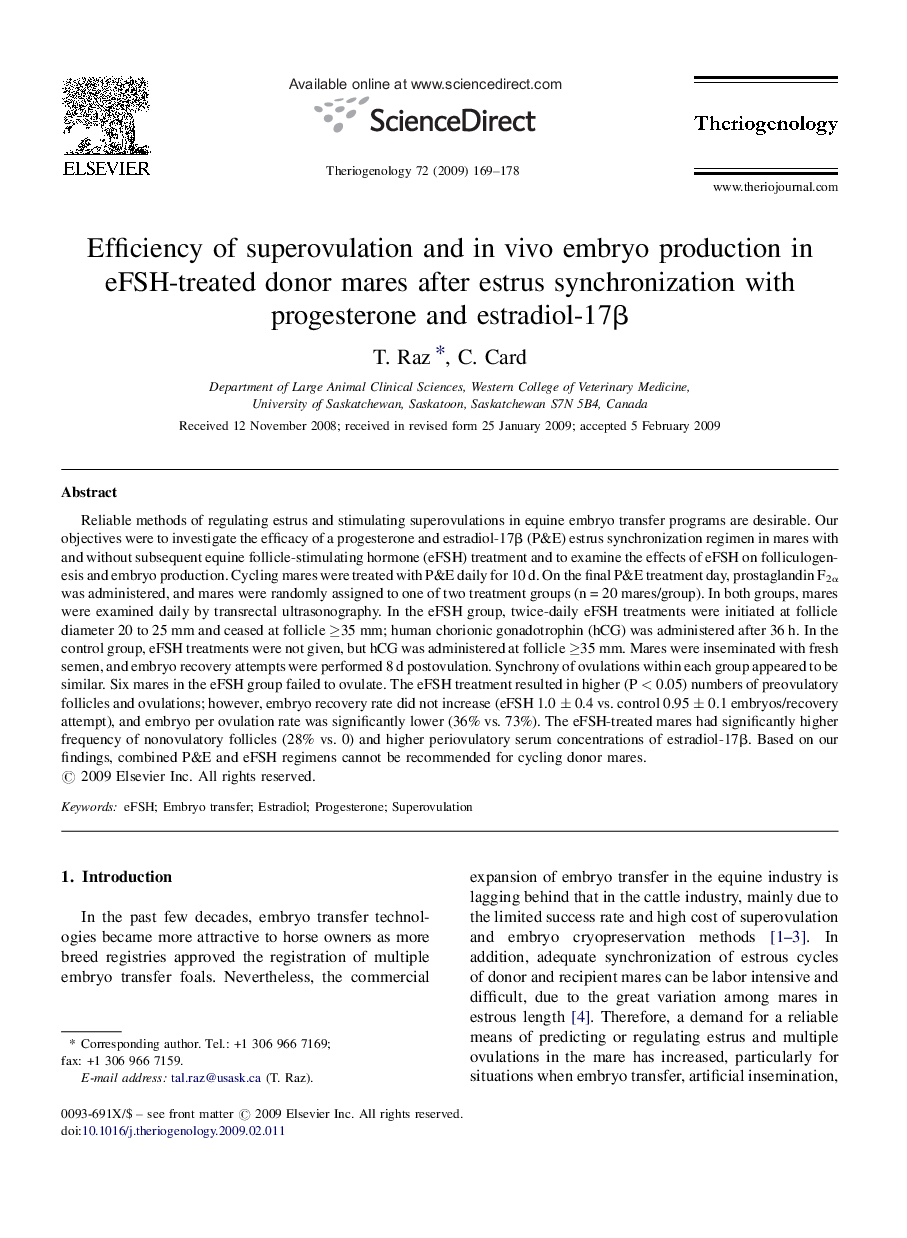| کد مقاله | کد نشریه | سال انتشار | مقاله انگلیسی | نسخه تمام متن |
|---|---|---|---|---|
| 2095736 | 1082135 | 2009 | 10 صفحه PDF | دانلود رایگان |

Reliable methods of regulating estrus and stimulating superovulations in equine embryo transfer programs are desirable. Our objectives were to investigate the efficacy of a progesterone and estradiol-17β (P&E) estrus synchronization regimen in mares with and without subsequent equine follicle-stimulating hormone (eFSH) treatment and to examine the effects of eFSH on folliculogenesis and embryo production. Cycling mares were treated with P&E daily for 10 d. On the final P&E treatment day, prostaglandin F2α was administered, and mares were randomly assigned to one of two treatment groups (n = 20 mares/group). In both groups, mares were examined daily by transrectal ultrasonography. In the eFSH group, twice-daily eFSH treatments were initiated at follicle diameter 20 to 25 mm and ceased at follicle ≥35 mm; human chorionic gonadotrophin (hCG) was administered after 36 h. In the control group, eFSH treatments were not given, but hCG was administered at follicle ≥35 mm. Mares were inseminated with fresh semen, and embryo recovery attempts were performed 8 d postovulation. Synchrony of ovulations within each group appeared to be similar. Six mares in the eFSH group failed to ovulate. The eFSH treatment resulted in higher (P < 0.05) numbers of preovulatory follicles and ovulations; however, embryo recovery rate did not increase (eFSH 1.0 ± 0.4 vs. control 0.95 ± 0.1 embryos/recovery attempt), and embryo per ovulation rate was significantly lower (36% vs. 73%). The eFSH-treated mares had significantly higher frequency of nonovulatory follicles (28% vs. 0) and higher periovulatory serum concentrations of estradiol-17β. Based on our findings, combined P&E and eFSH regimens cannot be recommended for cycling donor mares.
Journal: Theriogenology - Volume 72, Issue 2, 15 July 2009, Pages 169–178